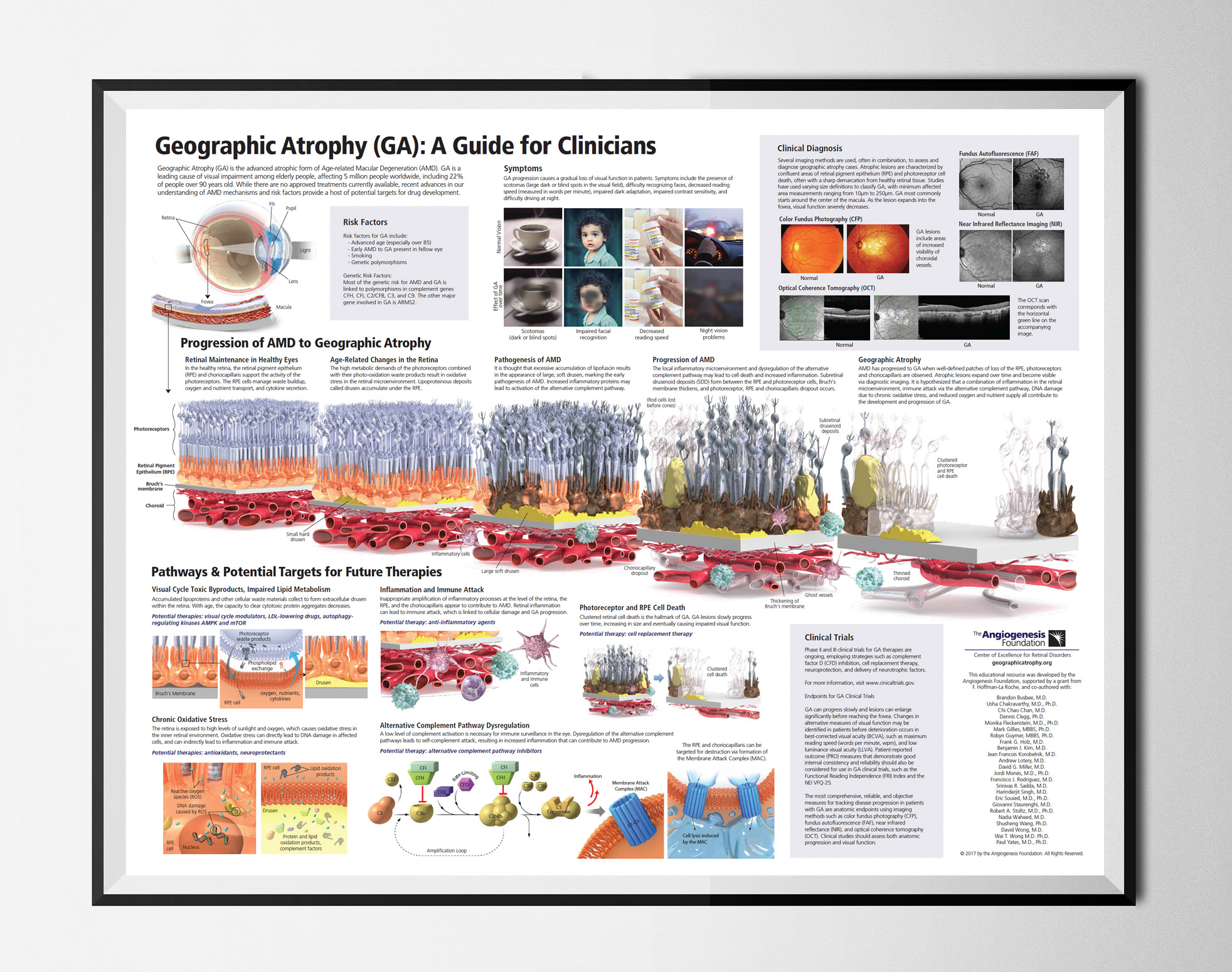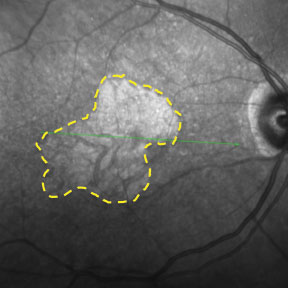Geographic atrophy (GA) is the advanced atrophic form of age-related macular degeneration (AMD).
GA causes impaired visual function and affects more than 5 million people worldwide, including 22% of people over 90 years old. Although there is currently no approved treatment for GA, improved understanding of AMD mechanisms and risk factors has engendered a host of potential targets for drug development. A number of GA therapies are currently undergoing evaluation in Phase II and III clinical trials, providing new hope for patients to delay disease progression and protect against loss of visual function.
The Center of Excellence for Retinal Disorders has create an educational multimedia toolkit to provide clinicians with information about GA, its underling mechanisms, and emerging therapies.
The Geographic Atrophy Educational Presentation provides in-depth information about the progression of age-related macular degeneration (AMD) to GA, GA symptoms and its impact on visual function, targets for future therapies, and ongoing clinical trials for GA.
The Geographic Atrophy Pathways and Mechanisms poster was developed by the Center of Excellence for Retinal Disorders to provide clinicians with a comprehensive understanding of the pathobiology, diagnosis and future therapies in development for geographic atrophy.








